"Massacre of a million": the battle way and the terrible death of the Communist Party of Indonesia
Social Democrats of the Dutch East Indies
The communist movement in Indonesia, unlike Indochina or Malaya, had a distinct European origin and, as in European countries, inherited the Social Democrats. In 1914, among the Europeans living in the Netherlands East Indies, the Indian Social Democratic Association (ISDA) was created, at the helm of which stood the famous Dutch activist Henk Sneevlit. The basis of the social democratic movement were members of the railway trade union — in the Netherlands East Indies, as in the Russian Empire, railway workers and employees were one of the most politically active detachments of workers. A member of this union was Henk Sneevlit.
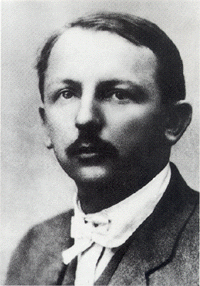 In addition to the Dutch and other Europeans, a number of Indonesians joined the association. In essence, ISDA was a colonial branch of the Social Democratic Labor Party of the Netherlands, but it had full actual autonomy. In 1917, there was a split in the organization - a more politically moderate part formed the Indian Social Democratic Party, while the radicals remained in ISDA.
In addition to the Dutch and other Europeans, a number of Indonesians joined the association. In essence, ISDA was a colonial branch of the Social Democratic Labor Party of the Netherlands, but it had full actual autonomy. In 1917, there was a split in the organization - a more politically moderate part formed the Indian Social Democratic Party, while the radicals remained in ISDA. By the time of the October Revolution in Russia, ISDA had finally established itself in revolutionary positions and decided that the development model of Soviet Russia was a model for Indonesian society. Since that time, the revolutionary Social Democrats of the Netherlands East Indies decided to build an organization similar to the Bolshevik party, including creating their own paramilitary structure - the Red Guard, staffed by activists of the Association of Dutch and Native Soldiers and Sailors. In total, the ISDA Red Guard had at least three thousand military personnel and former military personnel of the colonial forces and the naval fleet.
The influence of the Social Democrats among the rank-and-file and non-commissioned officers of the colonial army and navy was due to the rather poor conditions of service and the low level of material allowances for servicemen. At the same time among the Dutch military personnel were Social Democrats, who arrived from the Netherlands and spread socialist ideas among the native soldiers and sailors. The most active Social Democrats were among the soldiers and sailors of the naval bases in Surabaya, where in 1917 a powerful uprising took place, crushed by Dutch troops.
After the uprising, the head of the ISDA Sleep was 5 December 1918 was sent by the colonial authorities to their homeland, the Netherlands. He did not stay there; he managed to be a delegate to Moscow from the Communists of Indonesia, then took an active part in organizing the Chinese Communist Party. Returning to the Netherlands, in 1927, Snevlit gradually withdrew from the official line of the Communist Party of the Netherlands and led the Revolutionary Socialist Party, which was on the left communist positions. During the occupation of the Netherlands by Hitler’s forces during World War II, Snevlit was led by the underground anti-fascist Marx-Lenin-Luxemburg front, after the organization was exposed, he was arrested and 12 on April 1942 was executed along with his comrades-in-arms, having courageously met his death by singing Internationale.
The departure of Sneevlit and the transfer of part of Dutch activists to more moderate social democratic positions gradually contributed to the fact that the number of activists of native origin began to grow in ISDA. To the greatest extent, this process was determined by the allied relations of ISDA with the leftist nationalist organization “Sarekat Islam” (“Union of Islam”), whose members included people of socialist views who sympathized with ISDA and eventually became part of it. 23 May 1920, the Congress of the Indian Social Democratic Association decided to rename the organization into the Indian Communist Association (ICA). Thus, 1920 year can be considered the date of reference. stories namely the communist, not social democratic, movement in Indonesia.
First communists
In the new organization, Indonesians were already dominating in numbers. Semaun became chairman of the association, Darsono became his deputy. However, the Dutch were also represented in the ICA - they occupied three places in the central committee of the five possible. This was explained not only by the merits of the natives of the metropolis in the development of the communist movement in the Netherlands East Indies, but also by the fact that it was through the Dutch that the party could maintain ties with the world communist movement, first of all with Soviet Russia, which by that time was a guideline for most the communist parties of the world. Official contacts with Soviet Russia and Komnitnom on behalf of the Indonesian communists were made by the Dutchman Snevlit. It is noteworthy that it was the Indian Communist Association that became the first section of the Comintern in Asia. The deepening of contacts with the Comintern contributed to the assimilation by the Indonesian Communists of the advanced experience of their European and Russian like-minded people. Thus, the party began the formation of the communist-controlled trade union movement of workers in the Netherlands East Indies. In 1923, the communist-controlled trade union of railway workers went on strike, which resulted in severe repression by the authorities. Communist leader Kasym John Semaun was forced to flee the country. He settled in the Soviet Union, where he lived for more than thirty years, married, had children. In 1924-1928 Semaun represented Indonesia in the Comintern and the Profintern. The veteran of the communist movement returned to his homeland only after the country gained political independence.
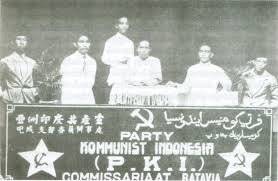 In 1924, the Indian Communist Association was renamed the Communist Party of Indonesia. By this time, it had already become a fairly active political organization that controlled the unions. The Comintern insisted that the KPI enter into an alliance with the national liberation organizations, but a number of leaders in the party leadership advocated the anti-colonial revolution by the forces of the communists, "here and now." It was planned that the performance of railroad workers would begin in Padang, which would become the instigators of the uprising of the rest of the Indonesian workers. Nevertheless, the Dutch counterintelligence was able to establish the direct organizers of the future uprising and arrest them. However, several performances in Indonesia took place - in the largest cities of the country of Batavia (now - the capital of Indonesia, Jakarta), Surabaya, Padang and Bantama. They were defeated by the Dutch police and colonial troops in a few weeks. Authorities imprisoned 4500 participants in the performances, 823 people were exiled to the wild Western New Guinea, which served as a kind of "Indonesian Siberia."
In 1924, the Indian Communist Association was renamed the Communist Party of Indonesia. By this time, it had already become a fairly active political organization that controlled the unions. The Comintern insisted that the KPI enter into an alliance with the national liberation organizations, but a number of leaders in the party leadership advocated the anti-colonial revolution by the forces of the communists, "here and now." It was planned that the performance of railroad workers would begin in Padang, which would become the instigators of the uprising of the rest of the Indonesian workers. Nevertheless, the Dutch counterintelligence was able to establish the direct organizers of the future uprising and arrest them. However, several performances in Indonesia took place - in the largest cities of the country of Batavia (now - the capital of Indonesia, Jakarta), Surabaya, Padang and Bantama. They were defeated by the Dutch police and colonial troops in a few weeks. Authorities imprisoned 4500 participants in the performances, 823 people were exiled to the wild Western New Guinea, which served as a kind of "Indonesian Siberia." The Communist Party of Indonesia was banned and after a serious blow struck, it was able to recover only during the Second World War, when the Japanese occupation of Indonesia changed the existing political situation and the situation in the sphere of political security. During the Japanese occupation, the party launched an underground activity, speaking out against the Japanese. As is known, it was the occupation of Indonesia, as well as the presence of the Japanese in other countries of Southeast Asia, that stimulated a sharp increase in the national liberation movement and the strengthening of its position after the end of World War II. Former partisans, battle-hardened, received weapon and creating underground bases in rural areas, no longer willing to put up with the role of the opposition party, which does not have a real influence on the country's policy. They did not fight against the Japanese, so that their native country would return under the leadership of the Dutch colonialists. Naturally, immediately after the war, the Communist Party of Indonesia joined the anti-colonial struggle of the Indonesian national liberation forces.
It should be noted that the national liberation struggle has been tough enough. The dwarf European state of the Netherlands did not want to part with the Asian colony, rich in natural resources and export agricultural goods. After all, the economic well-being of the Netherlands was largely ensured by the centuries-old exploitation of the Netherlands East Indies. However, the Dutch authorities showed their real weakness during the Second World War, when they were unable to offer decent resistance to the Japanese invaders. Naturally, the Indonesian national liberation movement believed in its own strength and did not slow down three days after the surrender of Japan, August 17 1945, to adopt the Declaration of Independence of Indonesia.
Sukarno and independent Indonesia
At the root of Indonesia's independence stood Sukarno. By the time the Declaration was declared, he was 44. With his fate, he seemed to embody the very idea of Indonesian supranational statehood. He was born into a Muslim and Hindu family, and began political activities in his youth and by the middle of the 1920s. was a prominent figure in the nationalist movement “Sarekat Islam”. In 1927, Sukarno headed the newly created National Party of Indonesia. However, in 1931, the party disbanded. During 1930's Sukarno was repeatedly subjected to repression by the colonial authorities as one of the leading figures of the national liberation movement. When Japanese troops invaded Indonesia, Sukarno, unlike the Communists, adopted the tactics of cooperation with Japan.
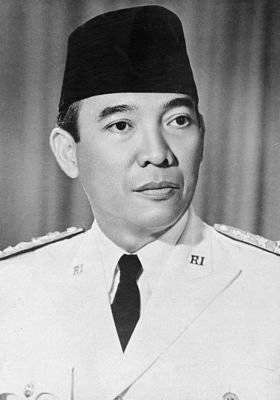 According to Sukarno, the Japanese Asians were a lesser evil than the Dutch colonialists and could be used by the national liberation movement to support the idea of an independent Indonesia. Indeed, the Japanese promised Sukarno in exchange for support to declare independence for Indonesia, however, for obvious reasons, they delayed the implementation of this intention until the end of hostilities. However, unlike the communists, Sukarno and his comrades-Indonesian nationalists-did not fight the Japanese, but supported them. Therefore, when Japan capitulated, Sukarno considered it his duty to declare the country's independence in order to prevent it from returning to the power of the Dutch colonialists.
According to Sukarno, the Japanese Asians were a lesser evil than the Dutch colonialists and could be used by the national liberation movement to support the idea of an independent Indonesia. Indeed, the Japanese promised Sukarno in exchange for support to declare independence for Indonesia, however, for obvious reasons, they delayed the implementation of this intention until the end of hostilities. However, unlike the communists, Sukarno and his comrades-Indonesian nationalists-did not fight the Japanese, but supported them. Therefore, when Japan capitulated, Sukarno considered it his duty to declare the country's independence in order to prevent it from returning to the power of the Dutch colonialists. The basis of the ideology of the new state should have been five principles — nationalism, internationalism, democracy, social well-being, and faith in God. Thus, Sukarno united the main components of the three branches of the national liberation movement in Indonesia - the nationalist, socialist and Islamist. The authority that Sukarno used in the national liberation movement allowed him to become virtually the sole leader of the state being formed. The armed units of the Indonesian patriots, created during the Second World War, also came under the control of Sukarno.
Meanwhile, in 1945, Dutch troops landed in Indonesia, relying on the help of the British, who did not want the appearance of a sovereign Asian state, which could become a “bad example” for the colonies of the British Empire. The armed confrontation between the Dutch colonialists and the Indonesian national liberation movement began, which lasted for three years. During this period, the Communist Party of Indonesia, which was speaking from anti-Japanese positions during the Second World War, acted as an ally of Sukarno. Many armed detachments of the Indonesian resistance were controlled by the Communist Party, and some leaders of the latter participated in the general leadership of the national liberation movement.
So, Amir Sharifuddin occupied in 1945-1947. post of Minister of Defense, in 1945-1946 - also as Minister of Information, and in 1947, he was appointed Prime Minister of the country. At the same time, the activization of the communists and their growing influence in state structures did not like the right wing of the nationalists and the Islamists. They insisted on disarming the armed subunits controlled by the communists, and in some cases used weapons against them. The murder of the Communists in Madiun caused an uprising of the city organization of the Communist Party and its supporters. In response, the command of the Indonesian army accused the communists of attempting a putsch and brought one of the most efficient divisions into the city. Several thousand Communist Party activists were killed, including one of its leaders, Manowar Musso. More than 36 thousands of Communist Party members and sympathizers were arrested and sentenced to various terms of imprisonment. And all this - against the backdrop of the ongoing confrontation with the Dutch colonialists, who did not want to lose control over Indonesia.
Ultimately, in 1949, the Netherlands, under pressure from the United States, who hoped to turn Indonesia into its ally in Southeast Asia, went to the cessation of hostilities. A number of other top leaders of the republic captured by Sukarno and captured earlier were released. 23 August 1949 held a conference in The Hague, where the United States of Indonesia was formed (RSHA), which included the Sukarnian Republic of Indonesia and a number of Dutch-controlled quasi-state entities led by local feudal lords and politicians. 17 August 1950, the unitary Republic of Indonesia was proclaimed instead of the federal FIR. Under the control of the Netherlands, only the most eastern and backward province of the former Netherlands East Indies - Western New Guinea (now - Irian Jaya) remained.
Communists are friends of the new government
The creation of the Republic of Indonesia in 1950 coincided with the gradual revival of the activities of the Communist Party, defeated during the suppression of the Midiun uprising. The then leader of the party, Deepa Aidit, supported Sukarno’s nationalist policies, meeting the understanding and agreement of other prominent Communist Party leaders. The authorities have not left this support unnoticed. In 1951, the KPI joined the Consultative Group of the country's political parties, that is, it was recognized as a mass political party. In 1955, the party supported the concept of “guided democracy” developed by Sukarno and turned into one of the pro-government political structures. This was followed by success in the parliamentary elections, where the Communist Party took the third place with 16% of the vote. In parallel, the party sought to gain popularity among the masses, starting to establish workers' control at industrial enterprises owned by foreign capitalists, primarily the Dutch.
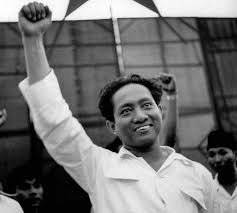 Between 1951 and 1965 The Communist Party of Indonesia was led by Deepa Nusantara Aidit (1923-1965), who served as secretary of the KPI Central Committee (1951-1954), general secretary of the KPI Central Committee (1954-1959), chairman of the KPI (1959-1965). Deepa Nusantara Aidit was the son of a forester, who received a good education and from the age of sixteen participated in the activities of the national liberation movement. In 1943, Aidit joined the Communist Party, and in 1947 he became a member of the Central Committee. Despite the commitment of the Marxist ideology, Aidit, guided by short-term considerations, fully supported the actions of Sukarno in the direction of the national ideology that combined nationalist and social slogans. Sukarno’s unequivocal support not only provided him with many years of tenure as head of the Communist Party of Indonesia, but also positions in the public service, including the post of minister without a portfolio in the Indonesian government, which Aydit has held since 1962.
Between 1951 and 1965 The Communist Party of Indonesia was led by Deepa Nusantara Aidit (1923-1965), who served as secretary of the KPI Central Committee (1951-1954), general secretary of the KPI Central Committee (1954-1959), chairman of the KPI (1959-1965). Deepa Nusantara Aidit was the son of a forester, who received a good education and from the age of sixteen participated in the activities of the national liberation movement. In 1943, Aidit joined the Communist Party, and in 1947 he became a member of the Central Committee. Despite the commitment of the Marxist ideology, Aidit, guided by short-term considerations, fully supported the actions of Sukarno in the direction of the national ideology that combined nationalist and social slogans. Sukarno’s unequivocal support not only provided him with many years of tenure as head of the Communist Party of Indonesia, but also positions in the public service, including the post of minister without a portfolio in the Indonesian government, which Aydit has held since 1962. Despite the opposition of the right side of the military command and the Islamists, the Communist Party the entire end of the 1950-x and the first half of the 1960-x. functioned as a pro-government organization that demonstrated support for the Sukarno course. This was due to the fact that Sukarno was in good relations with the USSR, China and other socialist countries. In 1960, the city of Sukarno raised the slogan "Nasakom" - nationalism, religion, communism, which was also greeted by the Communist Party with comprehensive approval. It was during this period that the Communist Party of Indonesia, as well as the communist parties of other countries in Southeast Asia, began to gain sympathy for Maoism. An increasing part of the KPI is guided by the Chinese way, considering it more correct and anti-imperialistic than the Soviet one. This is happening against the background of the development of relations between Indonesia as a state and the People’s Republic of China. For the period from 1950 to 1965. The size of the Indonesian Communist Party grew from 35 thousand to 3 million members. Naturally, such a numerous political organization had the opportunity to implement its own policy.
Sukarno was very unhappy with the projects of the British to create an independent Malaysia, because he hoped to establish control over this part of the Malay Archipelago. However, not wanting to act openly, he preferred to use the potential of the Communist Party of Indonesia. The latter entered into close cooperation with the Communist Party of Malaya, which has been leading a partisan war in the jungles of the Malacca Peninsula since the post-war years. Partisan detachments formed by the Communist Party of Indonesia began to infiltrate into Malaysia. Since on the Malacca Peninsula the Communist Party of Malaya had its own resources, detachments of the Indonesian communists ensured the activities of the partisan front in Borneo, the northern part of which became part of Malaysia. In Borneo, KPI units participated in hostilities against British and Australian forces that suppressed the communist movement in Malaysia.
Meanwhile, President Sukarno went to further exacerbate relations with Western countries that supported the creation of sovereign Malaysia. Indonesia announced its withdrawal from the United Nations after Malaysia was elected to the United Nations Security Council. Of course, the Communists supported these actions by Sukarno. Anticipating the further development of events in the direction of the Indonesian-Malaysian relations according to the military scenario, the Communist Party of Indonesia in the Maoist key advanced the concept of “armed people”, envisaging the transfer of weapons to labor unions. In July, 1965, the Communists, despite protests from the army leadership, began to train the first two thousand militia fighters. By this time, the army command already openly hated the Communists and with hostility belonged to the policy pursued by President Sukarno. This is also because the latter sent political commissioners to the military units, many of whom were members of the Communist Party or left-wing sympathizers.
September 30 Movement
On the night of September 30 to October 1, 1965, youth communist organizations attempted a military coup, relying on the sympathetic part of the officer corps. At 3.15 am on October 1, 1965, servicemen of the presidential guard regiment Chakrabirava, the Diponegoro division and the Bravijaya army broke into the territory aviation Halim base. They killed six generals - the top leaders of the Indonesian armed forces, including the Minister of Defense of Indonesia, Lieutenant General Ahmad Yani, Major General Mas Tirtodarmo Hariono, Suprapto, Siswondo Parman, Brigadier Generals Donald Panjaitan and Sutoyo Sisvomiharjo. The rebels also injured the five-year-old daughter of Lieutenant General Nasution (Abdul Haris Nasution served as chief of staff of the army), who died a few days later from injuries.
On the morning of October 1, military units controlled by the putschists from the Diponegoro and Silivangi divisions invaded Jakarta. Lieutenant Colonel Untung Shamsuri, who commanded the first battalion of the regiment of the presidential guard Chakrabirav, spoke on behalf of the rebels. He announced that the coup was committed in the interest of protecting President Sukarno of the country from the machinations of the generals associated with the CIA and planning a military coup. The following appeal, September 30 Movement, abolished all ranks higher than Lieutenant Colonel in the Indonesian armed forces, thereby hoping to get rid of the conservative-minded generals. Nevertheless, as a result of the serious mistakes made during the planning of the uprising, the generals of the Indonesian army who had survived the repression, they were able to promptly react to the events.
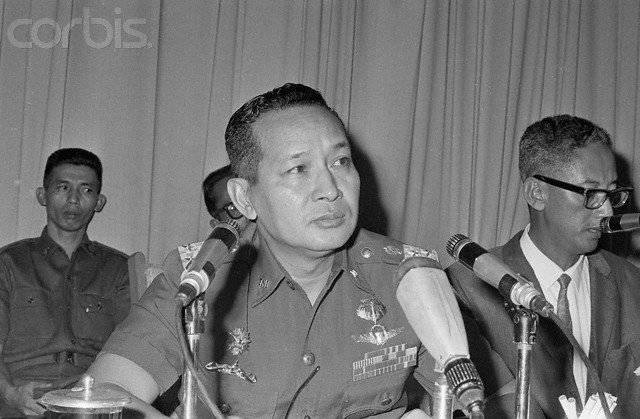
Major General Haji Mohammed Suharto, who commanded the army reserve, managed to convince the soldiers of the battalions who had left for Merdeka Square in Jakarta to disperse. By the same day 19 on October 1, Suharto’s subordinate units freed all of the objects controlled by the putschists. On October 2, President Sukarno, to whom nothing else remained, appointed Major-General Suharto to be the Commander-in-Chief of the Indonesian army. In fact, after the suppression of the coup, it was to this man - one of the most experienced combat officers of the Indonesian armed forces - that the entire power in Indonesia passed.
Massacre of a million communists
General Suharto, who led, in addition to the armed forces, the Operational Command to restore security and order, began mass repressions against the communist movement. Across Indonesia, a wave of massacres of Communist activists began, carried out by both military and members of right-wing and Islamist groups. As a result of the repression, 500 thousand to 1 million people were killed for several months. Among the victims of anti-communist hysteria were not only real activists of the Communist Party, but also a large number of people only suspected of sympathizing with the communists, and even killed in general by chance or by false denunciations.
The main role in the massacre was played by fanatical members of Islamist organizations. It is known that the lists of the Communists were provided to them by CIA agents. That is, even then the United States, interested in the overthrow of the anti-American regime of Sukarno and the destruction of the Indonesian Communist Party, used the fundamentalists as executors of the “dirty work”. Communists were killed with knives - “parangs”, and not only party activists, but also all members of their families — even children — became victims of massacres. Corpses were thrown on the roads, in the provinces of East Java, severed heads were set on poles. This led to an increase in epidemiological problems in a number of provinces of the country, primarily in the strongholds of Indonesian fundamentalist Islam - East Java and North Sumatra.
The mass murder of the Communists took place on the island of Bali, where Indonesian Hindus traditionally live. Here, due to the absence of a significant number of the Muslim population, anti-communist massacres were led by representatives of the highest Hindu caste, who called for the murder of communists who attempted to undermine the foundations of traditional caste society. However, the Communists were able to resist the militant Hindus and only assisted by the commando airborne regiment and the Bravijaya division helped the Hindu landowners complete the destruction of the Communist Party in Bali.
In addition to the million killed, up to two million people were thrown into prisons and concentration camps. Representatives of the Chinese population also became victims of the genocide. In Indonesia, as well as in most other countries of Southeast Asia, the imposing Chinese diaspora lived. The Chinese played an important role in the trade and consumer services of the population, in connection with which they were perceived by the peasants and urban underclass as exploiters and second-hand dealers. Naturally, the pogroms were accompanied by looting of Chinese shops, shops, workshops, robberies and murders of Chinese families. The power of anti-Chinese sentiment was not particularly hindered, since it was known that the PRC supported the Communist Party of Indonesia and could act through the numerous Chinese diaspora.
Haji Mohammed Suharto, promoted to lieutenant general and appointed as Minister of Defense of the country in 1966, effectively removed President Sukarno from his duties as head of state. The military leadership decided to ruthlessly destroy the communist movement in the country, not only out of considerations of revenge for the killed comrades-generals, but also to permanently protect themselves from the possible revival of the Communist Party (especially since the Indonesian communists in their history have been revived several times, literally , "from the ash").
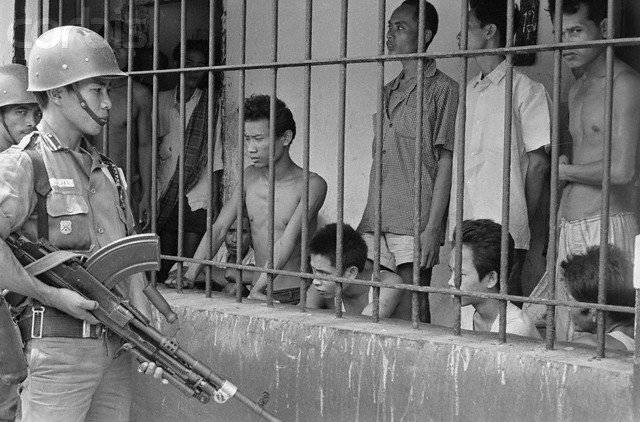
12 March 1966, General Suharto, officially banned the Communist Party of Indonesia and the unions under its control. In fact, the 1965 massacre of the year led to the destruction of the Communist Party of Indonesia. Sudisman, elected after the assassination of Aidit and Nyoto, leader of the party, was executed a year later. A small communist underground was formed only in Blitar in East Java, where in March 1968, the peasants staged a massacre of members of the Islamist party Nahdatul Ulam in revenge for the participation of Islamists in the murder of communist activists. Soon after this action, the underground in Blitar was defeated.
It is indicative of how the so-called democratic countries of the West perceived the horrendous murders in Indonesia. Australian Prime Minister Harold Holt said that the figure from five hundred thousand to a million "Communists killed off" indicates that the reorientation in Indonesia has been successful. The United States of America also welcomed the events in Indonesia, knowing full well that as a result of Suharto’s coming to power, they managed to destroy the most dangerous enemy of the United States in the country, the Communist Party, remove “uncontrollable” left-wing leader Sukarno from power and create all the conditions for turning Indonesia into an American puppet.
The bulk of the Communists who survived after the terrible events in various ways tried to leave the country. Most of the Communists arrived in the People’s Republic of China, some went to the socialist countries of Eastern Europe. The party continued to operate in emigration, but in Indonesia itself no longer had any real influence. Of course, one of the reasons for the events was the strategic miscalculations of the Communist leadership itself. Instead of betting on the mass movement, especially since all the possibilities for this were available - the party consisted of three million people, the leadership of the KPI chose to act through a “top-level plot”, relying on extremists - militants and a small part of the officer corps. Naturally, in the officer corps, the KPI sympathizers were a minority and the conservative generals succeeded in suppressing the coup attempt with lightning speed, after which they organized a massacre with the help of right-wing organizations that became fatal for the third largest (after the CPSU and the Chinese Communist Party) Communist Party of the World.
Information